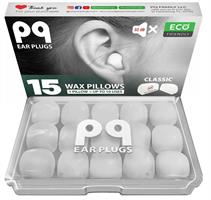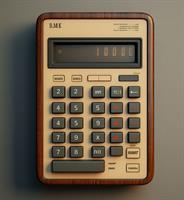STOP-Bang Questionnaire
Result:
?
Obstructive sleep apnea (OSA) is a significant health concern that, when left undiagnosed or untreated, can lead to various health complications and poor quality of life. Identifying and managing OSA effectively requires accurate screening tools.
The Stop Bang Questionnaire for sleep apnea is one such widely recognized tool that is used to assess the risk of OSA in patients.
This article post will delve into the questionnaire’s components, effectiveness, benefits, limitations, adaptations, practical applications, and alternative screening methods.
Key Takeaways
-
The STOP-Bang Questionnaire is a widely used tool for OSA screening with high sensitivity and varying specificity.
-
It has various limitations, such as lack of specificity, reliance on self-reported data, and inability to diagnose central sleep apnea or mild cases of obstructive sleep apnea.
-
Adaptations have been made to improve accuracy including gender specific thresholds and additional tests/criteria. It is also commonly used in medical settings for preoperative screening & hospitalized patients.
Understanding the STOP-Bang Questionnaire
The STOP-Bang Questionnaire is an eight-question tool that helps evaluate the likelihood of obstructive sleep apnea in patients. It is widely used for OSA screening and can aid doctors in determining if a sleep study is necessary to further assess the possibility of obstructive sleep apnea syndrome (OSAS).
However, keep in mind, the STOP-Bang Questionnaire alone is insufficient to diagnose OSA—a sleep study is required for a conclusive diagnosis.
Components of the Questionnaire
The STOP-Bang Questionnaire evaluates factors such as:
-
Snoring
-
Fatigue
-
Witnessed apneas
-
Blood pressure
-
Body mass index (BMI)
-
Age
-
Neck circumference
-
Gender
These components play a vital role in assessing a patient’s risk for OSA, given their connection to the common symptoms and risk factors associated with the condition.
Snoring, tiredness, observed apnea, and high blood pressure are the self-reportable criteria in the questionnaire, while BMI, age, neck size, and gender are demographic items that contribute to the overall evaluation of a patient’s OSA risk. Patients answer these questions with a “yes” or “no,” and their responses help determine their risk level.
Scoring System
The STOP-Bang Questionnaire is scored based on the total number of affirmative responses to the eight questions, with the overall stop bang score ranging from 0 to 8. Patients’ OSA risk can be classified according to their scores. As a general rule, a score of 3 or higher suggests a heightened likelihood of moderate to severe OSA, indicating a high risk.
The questionnaire is known for its high sensitivity in detecting OSA, with a sensitivity of 84%, 93%, and 100% for detecting all OSA (apnea-hypopnea index [AHI] ≥ 5), moderate OSA (AHI ≥ 15), and severe OSA (AHI ≥ 30), respectively, when the score is 3 or more.
Effectiveness of the STOP-Bang Questionnaire
The STOP-Bang Questionnaire has demonstrated its effectiveness in screening for sleep apnea, exhibiting high sensitivity in detecting OSA across a range of populations, including surgical patients and those attending sleep clinics. However, its specificity may vary, and the accuracy of the questionnaire depends on the population and region.
Overall, it is valued for its ability to identify individuals susceptible to sleep apnea and exclude obstructive sleep apnea cases.
Comparison with Polysomnography
When compared to polysomnography—the gold standard for sleep apnea diagnosis—the STOP-Bang Questionnaire has shown adequate sensitivity and diagnostic accuracy.It is highly sensitive in detecting moderate to severe OSA (apnea-hypopnea index [AHI] > 15). Its negative predictive value for detecting severe OSA (AHI > 30) is perfect at 100%. This means that the questionnaire is quite effective in identifying patients at risk of OSA and guiding further diagnostic evaluations.
However, the STOP-Bang Questionnaire has a reported false-negative rate of 8% (6%-11%) at a threshold of 3 or greater. This indicates that while the questionnaire is a valuable screening tool, it may not capture all cases of OSA, and additional diagnostic testing may be necessary for some patients.
Regional Variations in Performance
The performance of the STOP-Bang Questionnaire varies across different geographic regions, with some regions showing higher sensitivity and specificity than others.
A systematic review and meta-analysis of 47 studies found that the questionnaire has appropriate sensitivity and diagnostic precision for detecting moderate to severe OSA across geographic regions, except for East Asia, where the accuracy was lower (0.52; 95% CI, 0.48-0.56).
These regional performance variations emphasise the need to consider both the population and the region when employing the STOP-Bang Questionnaire for sleep apnea screening. Adapting the questionnaire to specific populations or combining it with other tests or criteria may be necessary to ensure accurate results and effective patient care.
Benefits and Limitations of the STOP-Bang Questionnaire
While the STOP-Bang Questionnaire offers several advantages, such as its simplicity, ease of implementation, and effectiveness as a screening tool for sleep apnea, it also has some limitations that should be considered when using it for OSA screening. These limitations include a lack of specificity, reliance on self-reported data, and the possibility of false positives.
Advantages
The STOP-Bang Questionnaire provides a convenient, quick, and straightforward method of assessing sleep apnea risk in diverse medical settings, including primary care clinics, sleep clinics, and preoperative evaluations. Its straightforward design makes it accessible to physicians who are not experts in sleep medicine.
Additionally, the questionnaire’s cost-effectiveness is notable, given that it doesn’t require any specialised equipment or laboratory tests. This advantage allows for the rapid identification of patients at risk for sleep apnea and guides appropriate referrals for further testing and treatment, ultimately enhancing patient care and outcomes.
Limitations
The STOP-Bang Questionnaire’s lack of specificity, which could lead to false positives, is one of its limitations. This means that some patients who are identified as being at risk for OSA based on their questionnaire score may not actually have the condition. Additionally, the questionnaire relies on self-reported data, which may not always be accurate or consistent.
Furthermore, the STOP-Bang Questionnaire is not suitable for diagnosing central sleep apnea. In such cases, alternative diagnostic tests or screening tools may be necessary to obtain a more accurate assessment of a patient’s sleep apnea risk and guide appropriate treatment decisions.
Adaptations and Modifications of the STOP-Bang Questionnaire
Researchers have proposed modifications to the STOP-Bang Questionnaire to improve its accuracy and applicability to different populations. These modifications include the use of gender-specific thresholds, additional tests and criteria, and adjustments for regional variations in performance. By doing so, they aim to enhance the stop bang scores’ reliability and effectiveness.
Gender-Specific Thresholds
Some adaptations of the STOP-Bang Questionnaire suggest using lower thresholds for women to account for gender differences in sleep apnea risk factors. The rationale behind this is the disparities in OSA risk factors between genders, such as body mass index, neck circumference, and age.
By adjusting the thresholds for women, the questionnaire can more accurately identify sleep apnea risk in both male and female patients, thereby guiding appropriate diagnostic evaluations and treatment decisions for all individuals.
Additional Tests and Criteria
The accuracy and diagnostic value of the STOP-Bang Questionnaire can be enhanced by combining it with other tests or criteria. For example, integrating the questionnaire with alternative screening tools, such as the Berlin Questionnaire or the ApneaLink Air tool, may provide supplementary data regarding a patient’s risk of sleep apnea.
By incorporating additional tests and criteria, the STOP-Bang Questionnaire can be more effective in identifying patients who may require further diagnostic testing or treatment, ultimately leading to better patient care and outcomes.
Practical Applications of the STOP-Bang Questionnaire
In diverse medical settings like primary care clinics, sleep clinics, and preoperative evaluations, the STOP-Bang Questionnaire can be employed to assess sleep apnea risk and inform treatment decisions. In addition to its utility in these settings, the questionnaire has also been adapted for use in hospitalized patients and to improve sleep with a snoring mouthpiece.
Preoperative Screening
The STOP-Bang Questionnaire is a valuable tool for preoperative screening, as it can help identify patients at risk of sleep apnea-related complications before surgery.
By assessing factors such as:
-
Snoring
-
Tiredness
-
Observed apnea
-
High blood pressure
-
BMI
-
Age
-
Neck circumference
-
Gender
The questionnaire allows medical professionals to determine a patient’s risk of OSA and make appropriate referrals for further testing or treatment.
In the preoperative setting, early identification of OSA risk can lead to:
-
Better management of anesthesia and pain management
-
Reduced likelihood of postoperative complications
-
Improved patient outcomes
-
More efficient allocation of healthcare resources
Hospitalized Patients
Doctors and nurses at the University Health Network can use the STOP-Bang Questionnaire to assess sleep apnea risk and sleep disordered breathing in hospitalized patients. By identifying patients at risk of OSA, medical professionals can ensure that appropriate diagnostic evaluations, treatments, and follow-up care are provided.
In the hospital setting, early identification and management of OSA can help prevent complications associated with the condition, such as cardiovascular events, respiratory failure, and poor wound healing.
Furthermore, the use of the questionnaire in this setting allows for a more comprehensive approach to patient care, addressing not only the immediate medical concerns but also potential underlying sleep disorders.
Improving Sleep With A Snoring Mouthpiece
The STOP-Bang Questionnaire can help identify patients who may benefit from using a snoring mouthpiece to improve their sleep quality. By assessing factors such as snoring, tiredness, and observed apnea, the questionnaire can determine which patients may experience improved sleep quality with the use of a snoring mouthpiece.
A snoring mouthpiece can help reduce snoring, enhance sleep quality, and decrease the risk of sleep apnea. However, bear in mind that not all individuals might find a snoring mouthpiece suitable, and it may not be effective in every case. In such instances, alternative treatments or interventions may be necessary.
Alternative Screening Tools for Obstructive Sleep Apnea
Although the STOP-Bang Questionnaire is the most validated tool for sleep apnea screening, other questionnaires and tools can also identify patients at risk of sleep apnea. These alternatives include the Berlin Questionnaire and the ApneaLink Air tool, which can also be used to assess sleep apnea risk and guide treatment decisions.
The choice of screening tool depends on factors such as the medical setting, patient population, and individual patient characteristics.
In some cases, a combination of screening tools, including obstructive sleep apnea screening, may be necessary to diagnose obstructive sleep apnea and obtain a more accurate assessment of a patient’s sleep apnea risk, guiding appropriate treatment decisions.
Summary
In summary, the STOP-Bang Questionnaire is a widely recognized and effective tool for assessing sleep apnea risk in various medical settings. While it offers several advantages, such as simplicity, ease of implementation, and cost-efficiency, it also has some limitations that should be considered when using it for OSA screening.
Adaptations and modifications, such as gender-specific thresholds and additional tests or criteria, can enhance the questionnaire’s accuracy and applicability to different populations.
Overall, the STOP-Bang Questionnaire is a valuable instrument in the early identification and management of sleep apnea, ultimately improving patient outcomes and healthcare resource allocation.
Frequently Asked Questions
What is stop-bang sleep apnea questionnaire?
The STOP-Bang Questionnaire is an evaluation tool designed to help doctors quickly identify your risk of having obstructive sleep apnea (OSA). It asks questions related to snoring history, daytime fatigue, observed pauses in breathing while sleeping, high blood pressure, BMI, age, neck circumference, and gender.
What is a normal stop-bang score?
A STOP-Bang score of 0 to 2 is considered low risk for moderate or severe OSA, while a score of 5 to 8 is classified as high risk. Scores in the midrange (3 or 4) require further assessment to determine the likelihood of OSA.
How do you use the stop-bang questionnaire?
The STOP-Bang questionnaire is used to determine the risk of having obstructive sleep apnea. It consists of eight questions with one point given for each symptom or risk factor, for a maximum score of eight points.
The higher the score, the greater the risk of moderate or severe OSA.
Are there any limitations to the STOP-Bang Questionnaire?
Yes, the STOP-Bang Questionnaire has some limitations, such as its reliance on self-reported data, potential for false positives, and inability to diagnose central sleep apnea or mild cases of obstructive sleep apnea.
What are some alternative screening tools for sleep apnea?
Alternative screening tools for sleep apnea include the Berlin Questionnaire and the ApneaLink Air tool, providing comprehensive assessments to identify potential sleep apnea sufferers.
References
- Use and Performance of the STOP-Bang Questionnaire for Obstructive Sleep Apnea Screening Across Geographic Regions. https://www.ncbi.nlm.nih.gov/pmc/articles/PMC7941199/
- Examining the diagnostic validity of the Berlin Questionnaire in a low-income Black American sample. https://www.ncbi.nlm.nih.gov/pmc/articles/PMC8494099/
- Validation of the ApneaLink™ for the Screening of Sleep Apnea: a Novel and Simple Single-Channel Recording Device. https://www.ncbi.nlm.nih.gov/pmc/articles/PMC1978315/



